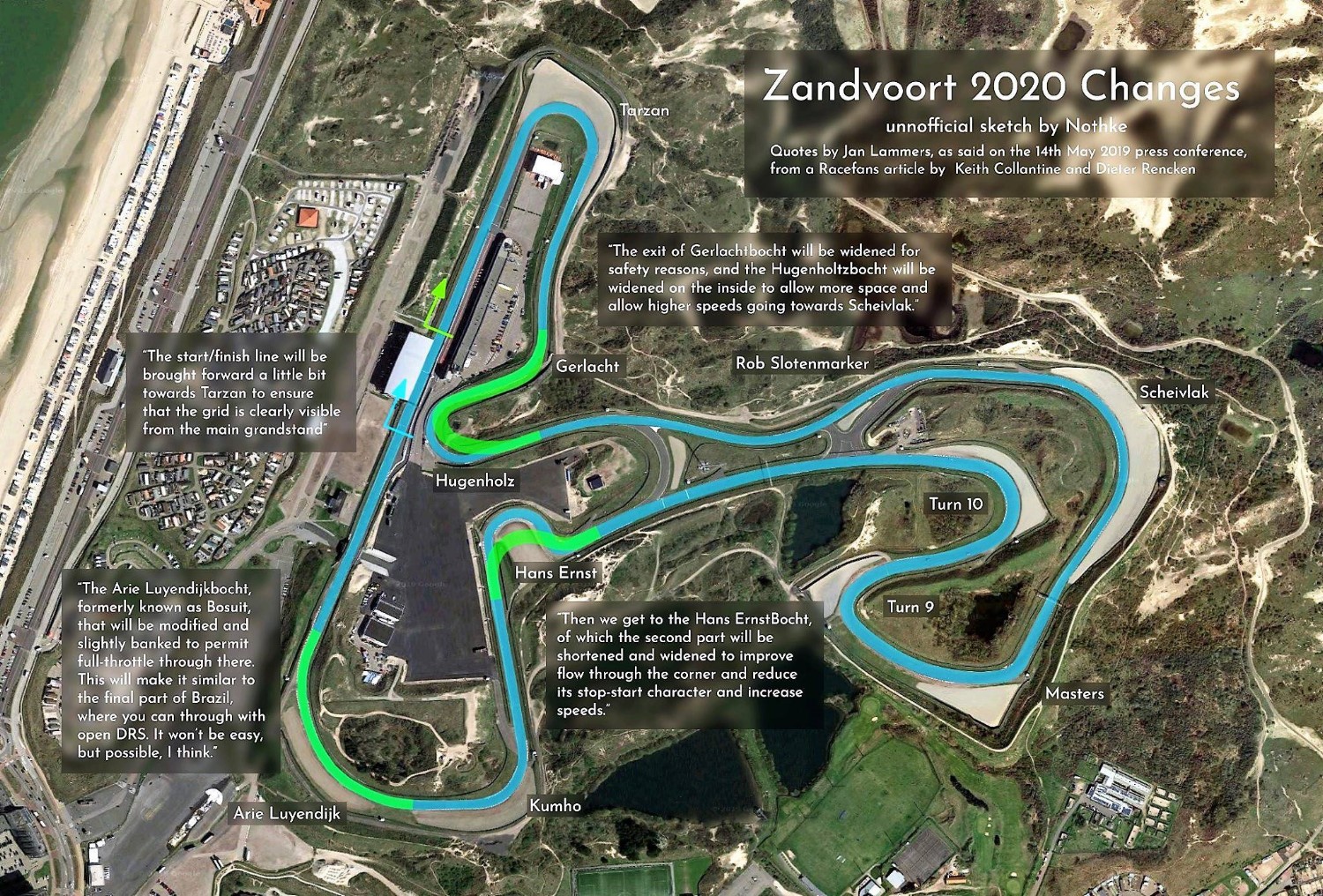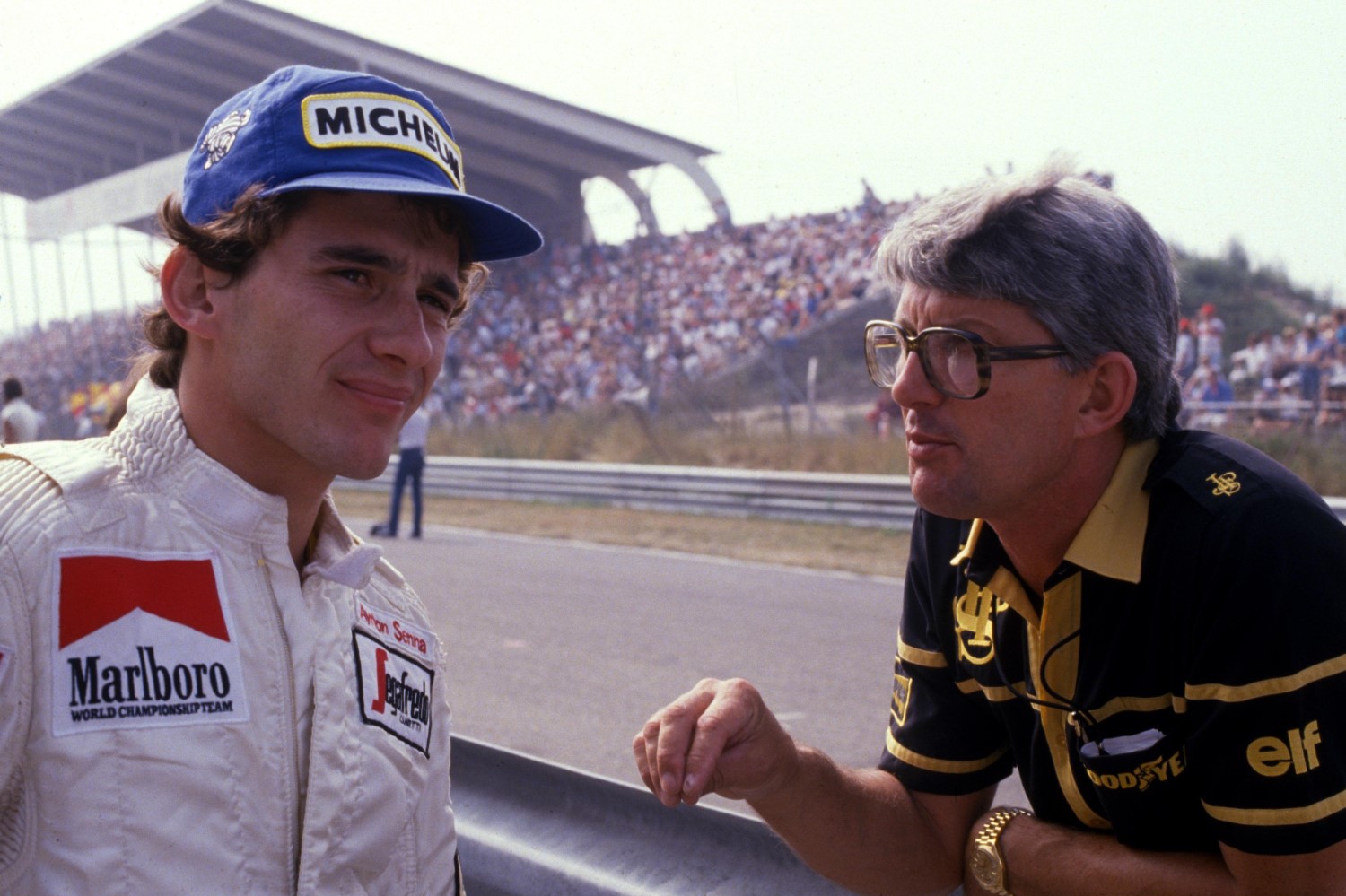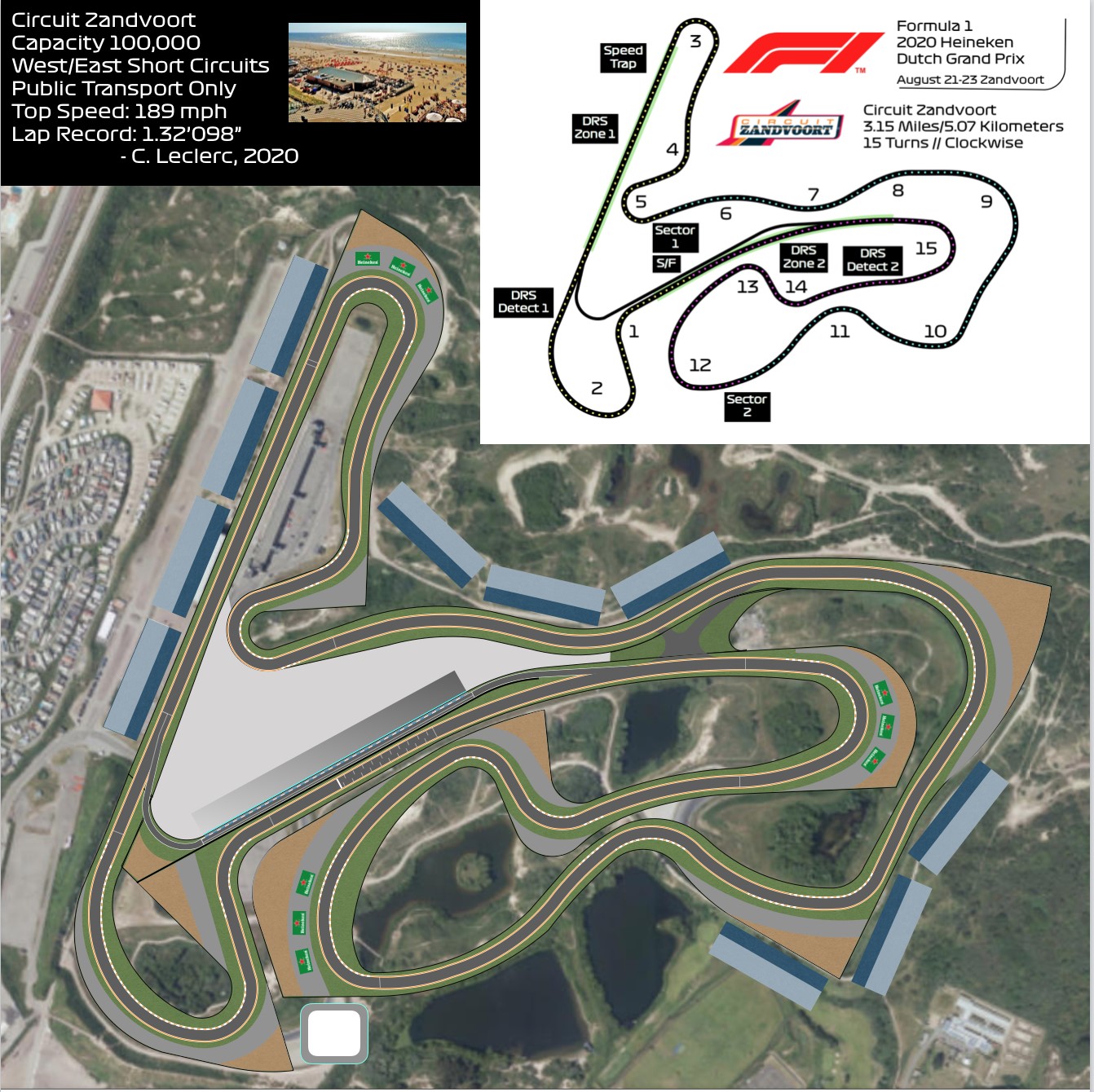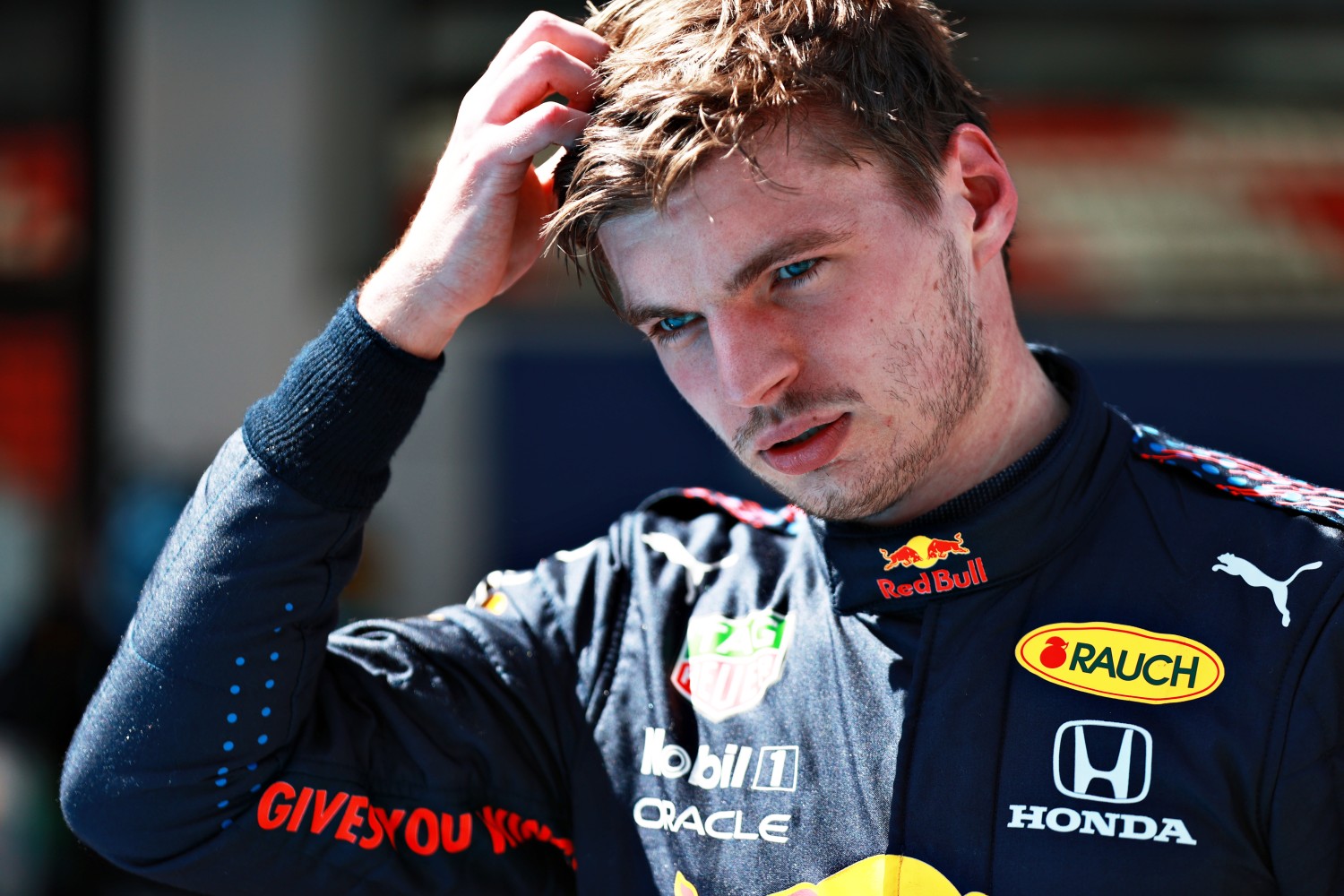F1: Dutch Grand Prix Preview
One takes a step into the unknown this weekend as the triple-header heats up. The F1 teams are heading to the seaside, with Circuit Zandvoort set to end a 36-year hiatus for Formula 1’s Dutch Grand Prix. Zandvoort has not featured on Formula 1’s schedule since 1985.
The contrast between Zandvoort and Spa couldn’t be much greater: following the long flowing lap in Belgium F1 now races on a short twisty track in the Netherlands. Fortunately, it looks likely that the weather will also be in stark contrast to last weekend with dry conditions expected for most of the weekend.
The track’s camber and asphalt roughness will dictate the downforce level, and we can expect to see teams experimenting on Friday. Several of the corners are very fast, except for T13, they lead immediately into the braking zones of the following corner. There are two independent DRS zones, which should help the racing, but the zone at T10 is short but may help the following car stay in the DRS trigger range at T13 ready for a pass on the start/finish straight.
Zandvoort can trace its history back to the late 1930s, when the coastal sand dunes to the north of the municipality were chosen for a race track, though its construction was delayed until the mid-1940s owing to the Second World War. The flowing and undulating circuit became a mainstay of Formula 1’s calendar but it dropped from the schedule after 1985, and was shortened, allowing for a housing development nearby, with track activity significantly reduced.

But in recent years the circuit’s popularity has risen once more, and allied with the emergence of Max Verstappen, it has returned to Formula 1 circles. In 2019 it was confirmed that the Dutch Grand Prix would return to the championship in May 2020. The old-school 4.259km Circuit Zandvoort underwent a full reprofiling, including an overhaul of its facilities, with significant 18-degree banking added to the widened Arie Luyendyk Bocht that leads drivers onto the pit straight.
The pandemic postponed the event’s return by 16 months but after the longest time between successive national grands prix in history – 36 years – Formula 1 is ready to return to Circuit Zandvoort.
What Can We Expect from Zandvoort?
How do we prepare for a race?
Before the cars have even emerged from the garage on Friday for practice, a huge amount of work has already happened in the virtual world, to ensure we are in a good place by the time the cars hit the track. This is true for both familiar and unfamiliar tracks.
One of the most important areas of the preparation process involves computer simulations, where the model of the car is coupled with a “virtual driver” to complete thousands of computer laps of a circuit’s racing line file (which is generated in state-of-the-art simulator facilities).
This form of preparation produces a few terabytes of data, as laps can be sped up and run in parallel with other simulations, sampling a massive range of set-up options, to find the optimum direction for the car.
The strategy department also use computer simulations to determine strategy options for Qualifying and the race. The models feature all drivers and teams, assumptions for pit stop scenarios, pit stop losses, tire degradation and car competitiveness. These are thrown into the computer simulations to run a wide variety of scenarios, determining which tires to use, what lap to pit and much more.
The data output from all these different simulations are compared and overlaid with other simulation data, to decide the fastest options. Our technical partners play a big role in this stage of the process, from HPE providing data center infrastructure and hardware, to Pure Storage’s storage solutions and TIBCO’s visualization and reporting tools.

While the simulation tools are running on the computer, the Driver-in-Loop (DiL) simulator is also in action, utilizing a virtual environment, sophisticated models of the car and track, but with one important difference: the virtual driver is replaced for a real one. They’ll complete hundreds of laps in the simulator, trialing different set-ups to try and get a better feeling for what works and what doesn’t around that track.
This work is all designed to prepare us the best we can to hit the track running on Friday. The aim is always to arrive with a set-up direction we are confident in and can build on, as we work through our run plans, rather than having to make significant changes during practice.
And how does this preparation differ for a new or unfamiliar track?
For the most part, the preparation stages are business as usual, running through the usual rhythm and drumbeat of work ahead of a race weekend. But there are some differences that need to be taken into account, which do mean preparation timeframes are longer.
The DiL and simulation tools that are used in F1 require a hugely complex and impressive model of the circuit, including bumps, curb shapes and corner gradients. The more detail, the better! As we can get more accurate information from it.
For new tracks, we understandably don’t have these detailed track environments to use in our simulations, so we need to start these from scratch. The FIA provides CAD drawings and coupled with high-tech LIDAR data (from laser-scanning the track), these lead to the 3D map of the circuit being created.
Obviously, for tracks that we have raced on before, we already have these 3D circuit environments, and these will continue to be tweaked and changed each year. But having to create a new map is a much bigger piece of work, which must be completed in incredible detail.

For a new circuit, the information and data we can get in the virtual world is hugely important because we have very little historical data. So teams are much more dependent on these simulation tools, which leads to a more extensive program.
For a race we have been to before, we’d typically complete a two-day program in the build-up to an event, completing roughly eight race distances in the process. But when it is a new race or venue, a further two days are added to the program, plus a further day for the race drivers to familiarize themselves with the layout.
What are the main characteristics of Zandvoort?
The Zandvoort track layout stands out as one of the more unusual circuits on the 2021 F1 calendar, with a fast, flowing and old-school feel.
There is a real mix of corners speeds, which will put many aspects of car performance to the test and provide the drivers with a challenging circuit to master! It’s also an undulating track, rising and falling between the sand dunes, with a rollercoaster-like vibe similar to Portimão.
One of the most striking elements of Zandvoort is the super-fast, steeply banked Turns 13 and 14. The 18-degree banking will add significant load to the tires through this section, which will impact the durability and life of the tire compounds.
Climate wise, the weather in Zandvoort can be quite challenging and changeable, which could trigger some potential tire issues, such as graining or blistering. But given the banked final corner, high-speed turns and undulations, it’s not surprising that Pirelli have picked the hardest tires in their range.
Which sections of track do we expect to be the most challenging?
The banked final two corners, which feature a banking angle twice as steep as the Indianapolis Motor Speedway, will definitely be challenging for the cars and the tires, putting a lot of forces through them. But they should be fairly simple for the drivers to tackle.
Getting this section of track right is crucial for the run onto the main straight, which leads to one of the few overtaking opportunities: Turn 1. The 180-degree corner is similar in profile to the first corner at the Hungaroring, so it should provide a good chance to make a move and try alternative lines.
The banked Turn 3 will also be a challenge and sets you up for the long, fast sweep through the next few corners. Traction here will be a particularly crucial area to find time through those flat-out turns.
Elsewhere, the tight and twisty Turns 11 and 12 will be another potential overtaking spot and a good exit here will either set up a strong run through the final banked corners, or bring you close enough to follow the car in front through those last two turns and try a move down the main straight.
Regardless of specific corners, Zandvoort is a fast track and will provide drivers with a fun challenge, particularly in Qualifying when pushing to find the limit.
Unlocking the Lap
The main straight will offer one of the few opportunities for drivers to complete a pass as they head towards the challenging first corner: Tarzan.
This long 180-degree hairpin punishes drivers who are late on the brakes: a poor entry line will compound the error into the following ess-bend sequence.
The Tarzan hairpin is cambered, encouraging multiple racing lines, expect speeds well below 160km/h (100mph).


It’s crucial drivers get back on the power as quickly as possible on the exit of Tarzan to maximize the kink of Turn Two before the first stretch of cambered track.
The kink will require drivers to tap the brakes and aim for the inside curb, trying to keep speeds around 265km/h (164mph) before entering Hugenholtz.
The banking is designed to offer multiple points of attack, so drivers will need to find the optimum racing line and watch their mirrors.
It’s a sharp left into the turn, so drivers will drop down into second gear before quickly getting back on the power as they move through the 19-degree banked corner.
Turns Four, Five and Six are part of a flowing sequence midway through the lap and are expected to be taken flat-out.
Drivers may err on the side of caution at the exit of Turn Six by dabbing the brakes because the gravel trap looms on the outside of the corner.
There’s a short straight leading to Turn Eight, and drivers need to hug the left-hand side of the track because the corner tightens midway through – again, expect speeds around 160km/h (100mph).
Turns Nine and 10 are tricky, irregular, hairpins. Expect grip to be at a premium through here. The DRS detection point is just on the entry to Turn 10, with the short back straight providing a quick DRS zone before further tight corners.
Turns 11 and 12 run back-to-back and will be low speed, requiring drivers to take a tight line and be patient as Turn 12 unwinds onto a straight.
Turn 13 is the last braking zone of the lap, and any mistakes here will punish drivers all the way to Tarzan.
Drivers will aim to maintain high speed, clipping the curb on the inside, to maximize their approach to the final banked corner of Luyendyk.
Luyendyk is one of the widest corners on the circuit, taken at full throttle, and will hopefully widen the scope for DRS-assisted overtakes along the main straight.
The banking and the mix of low and high-speed sections means drivers and teams will have to find the set-up compromise to excel across a lap, while also standing up to the immense test of banked corners.
Q&A with local hero Max Verstappen
How are you feeling after winning the shortest race in Formula One history?
It’s not how you expect to win a race and not the way we wanted the weekend to go, but a win is a win and the points are still important for both championships, and we have to maximize every opportunity. Of course as drivers we all wanted to race and put on a show for the fans, but it was clearly not an easy decision and the lack of visibility meant it just wasn’t safe in the end, so we have to respect that.

The Dutch GP will be your second home race in a row, how does it feel to be heading to the Netherlands to race in Formula One for the first time in your F1 career?
I’m really looking forward to the race at Zandvoort. It will be special to have a race in the Netherlands in front of my home crowd but also as a driver it’s a good challenge to go to a new circuit and find the limit in an F1 car. It was amazing to see so many fans supporting us in Austria and Belgium and I hope we can put on a good show for everyone in the grandstands this weekend. As for the track, it might be a little hard to overtake on but for single lap performance I think it’s going to be rewarding. The qualifying laps will be very quick there, so any mistakes will be really costly. After the race was cancelled last year this year will be even more special and of course it would be amazing to win on another home circuit in front of the Orange Army.
You won the 2014 Formula 3 Masters race at Zandvoort. How has the track changed since then?
I’ve only done one race at Zandvoort, and it was in a Formula 3 car. At that time I was known as ‘the son of’ but it’s going to be the other way around now [laughs]. The track has, of course, changed since then, with a few corners adjusted. Already in the F3 car, the corners were really enjoyable, and they were pretty fast, so I’m excited to race again in the F1 car with even more grip. I’ve also been there a few times with Red Bull for show runs in an old f1 car, so I have driven a few laps on the updated track in an F1 car, which could be useful on the first few laps.
